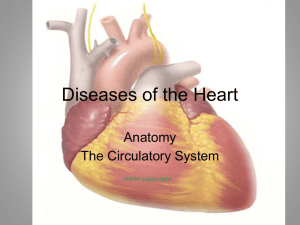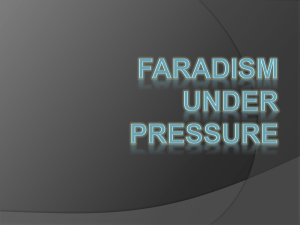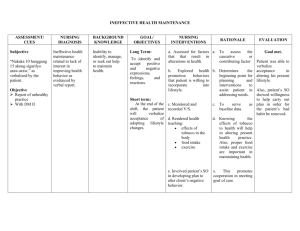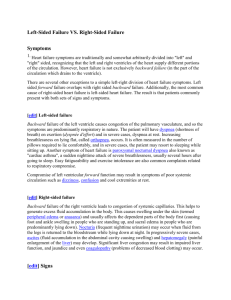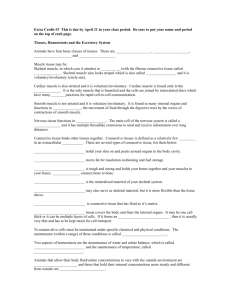Glossary of Terms
advertisement
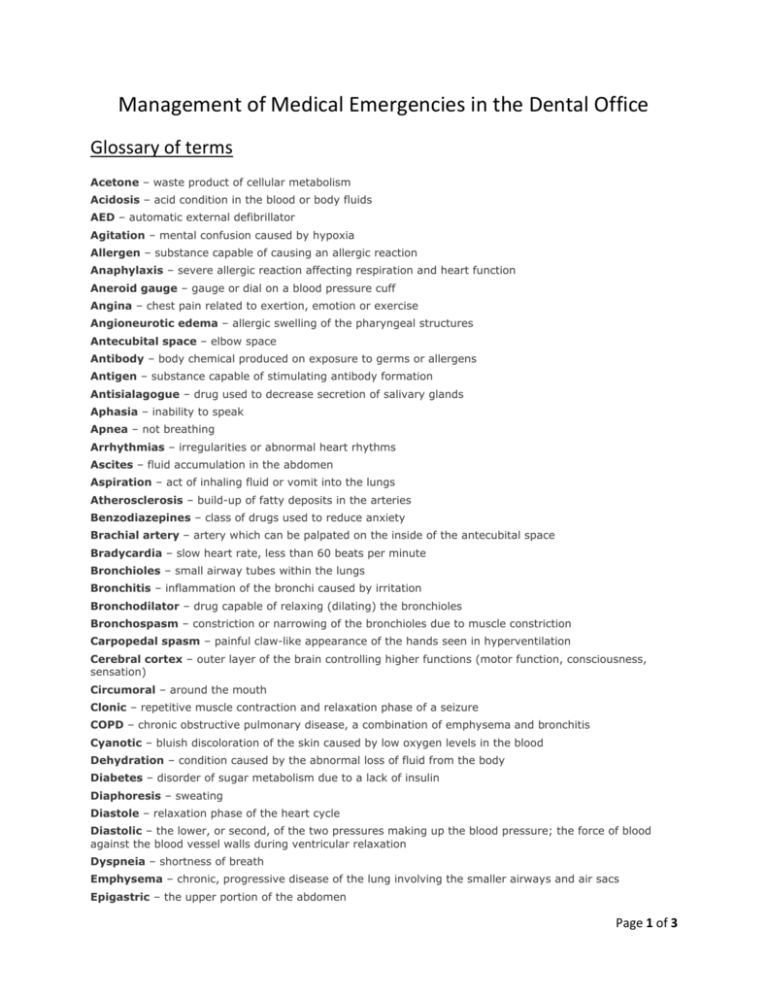
Management of Medical Emergencies in the Dental Office Glossary of terms Acetone – waste product of cellular metabolism Acidosis – acid condition in the blood or body fluids AED – automatic external defibrillator Agitation – mental confusion caused by hypoxia Allergen – substance capable of causing an allergic reaction Anaphylaxis – severe allergic reaction affecting respiration and heart function Aneroid gauge – gauge or dial on a blood pressure cuff Angina – chest pain related to exertion, emotion or exercise Angioneurotic edema – allergic swelling of the pharyngeal structures Antecubital space – elbow space Antibody – body chemical produced on exposure to germs or allergens Antigen – substance capable of stimulating antibody formation Antisialagogue – drug used to decrease secretion of salivary glands Aphasia – inability to speak Apnea – not breathing Arrhythmias – irregularities or abnormal heart rhythms Ascites – fluid accumulation in the abdomen Aspiration – act of inhaling fluid or vomit into the lungs Atherosclerosis – build-up of fatty deposits in the arteries Benzodiazepines – class of drugs used to reduce anxiety Brachial artery – artery which can be palpated on the inside of the antecubital space Bradycardia – slow heart rate, less than 60 beats per minute Bronchioles – small airway tubes within the lungs Bronchitis – inflammation of the bronchi caused by irritation Bronchodilator – drug capable of relaxing (dilating) the bronchioles Bronchospasm – constriction or narrowing of the bronchioles due to muscle constriction Carpopedal spasm – painful claw-like appearance of the hands seen in hyperventilation Cerebral cortex – outer layer of the brain controlling higher functions (motor function, consciousness, sensation) Circumoral – around the mouth Clonic – repetitive muscle contraction and relaxation phase of a seizure COPD – chronic obstructive pulmonary disease, a combination of emphysema and bronchitis Cyanotic – bluish discoloration of the skin caused by low oxygen levels in the blood Dehydration – condition caused by the abnormal loss of fluid from the body Diabetes – disorder of sugar metabolism due to a lack of insulin Diaphoresis – sweating Diastole – relaxation phase of the heart cycle Diastolic – the lower, or second, of the two pressures making up the blood pressure; the force of blood against the blood vessel walls during ventricular relaxation Dyspneia – shortness of breath Emphysema – chronic, progressive disease of the lung involving the smaller airways and air sacs Epigastric – the upper portion of the abdomen Page 1 of 3 Epilepsy – neurological disorder associated with seizures Exhalation – movement of air out of the lungs Fibrinolysis – process when a clot or coagulation is broken down Gingival hyperplasia – an overgrowth of gingival tissue often requiring surgery to reduce Glaucoma – increased pressure in the anterior chamber of the eye which may lead to blindness Glucose – form of sugar preferred by the body as an energy source for metabolism HEPA respirator – High Efficiency Particulate Arresting; air respirator used for personal protection when working with patients with known or suspected tuberculosis Hepatomegaly – swelling or enlargement of the liver seen in right heart failure Histamine – potent chemical released by body cells in response to infection or allergy Hypertension – elevated blood pressure exceeding 140/90 Hyperventilation – increased rate and/or depth of breathing leading to excessive excretion of carbon dioxide Hypoglycemia – low blood sugar Hypopharynx – lower portion of the pharynx (throat) at openings of trachea and esophagus Hypotension – lower than normal blood pressure Hypoxia – body is deprived of adequate oxygen supply IM – intramuscular; drug administration into a muscle Inhalation – movement of air into the lungs Ischemic – decreased or inadequate blood supply to an organ or tissue IV – intravenous; drug administration into a vein Jaundice – yellow discoloration of the skin and sclera due to liver disease Kussmaul respirations – rapid deep ventilations seen in diabetic ketoacidosis Laryngoscope – instrument used to view the larynx Laryngospasm – spasm (constriction) of the vocal cords Larynx – the voice-box Magill forceps – instrument used for manipulation of structures or tubes in the pharynx Metabolic – relating to metabolism; chemical reactions that happen within the body to maintain life Myocardial infarction (MI) – heart attack; portion of heart muscle becomes ischemic and dies NTG – abbreviation for nitroglycerin; blood vessel dilator Orthopnea – difficulty breathing only when lying flat Orthostatic hypotension – decreased blood pressure caused by rapid movements from supine to standing posture, or loss of body fluids Osmotic – pressure on water exerted by dissolved substances in a fluid separated by a semipermeable membrane Pallor – pale appearance to the skin due to decreased blood flow in the skin Palpated – feeling a body part or structure Pharynx – the throat Pitting edema – swelling of the ankles and feet due to heart failure PO – by mouth; administration of drugs by mouth (per os) Polyuria – excessive urination Post-ictal – the time period immediately following a seizure Prodromal – initial symptom or sign Pruritus – itching Pulmonary edema – fluid build-up in the lung due to left heart failure Rales – crackling or bubbling sounds heard in the chest with pulmonary edema Respiratory rate – number of respirations per minute Page 2 of 3 Sphygmomanometer – inflatable blood pressure cuff with Velcro closure SQ – subcutaneous; injection of drugs into subcutaneous (fat) tissue Sternocleidomastoid – muscle of the side of the neck Stethoscope – instrument for listening to breath or heart sounds Stridor – high pitched breathing sound caused by partial collapse or obstruction of the upper airway during inhalation Supine – lying on the back in a horizontal plane; subsupine positioning is when the head is slightly lower that the knees to return more blood flow to the brain Syncope – fainting Systole – contraction phase of the heart cycle Systolic – top, or first, of the two pressures making up the blood pressure; the force of blood against the blood vessel walls during ventricular contraction Tachycardia – a rapid heart rate, faster than 100 beats per minute Tonic – phase of seizure where all muscles of the body remain contracted Umbilicus – navel or belly button Urticaria – raised wheals (hives) of the skin seen in allergic reactions Ventricular fibrillation – disorganized heart rhythm that does not result in a pulse Xiphoid process – lower-most pointy part of sternum Page 3 of 3
